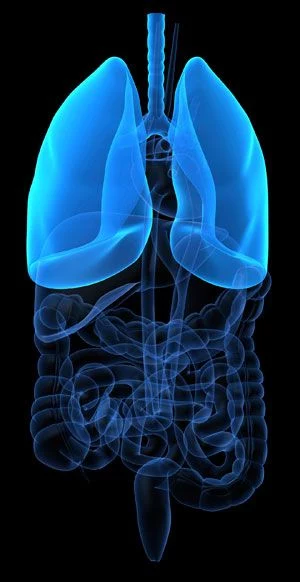Article
EU Panel Recommends Capmatinib for METex14-Altered Advanced NSCLC
Author(s):
The European Medicines Agency’s Committee for Medicinal Products for Human Use has recommended granting marketing authorization to capmatinib for use as a single agent in select adult patients with advanced non–small cell lung cancer harboring a METex14 skipping alteration.

The European Medicines Agency’s Committee for Medicinal Products for Human Use (CHMP) has recommended granting marketing authorization to capmatinib (Tabrecta) for use as a single agent in adult patients with advanced non–small cell lung cancer (NSCLC) harboring a METex14 skipping alteration and who require systemic therapy after previous immunotherapy and/or platinum-based chemotherapy.1
The positive opinion is based on findings from the phase 2 GEOMETRY mono-1 trial (NCT02414139), in which the agent elicited an overall response rate (ORR) of 51.6% (95% CI, 33.1%-69.8%) in a subset of patients who received capmatinib as second-line therapy (n = 31); this included a partial response (PR) rate of 51.6% and a stable disease rate of 35.5%.2 The median duration of response (DOR) was 8.4 months (95% CI, 4.2–not evaluable), and the disease control rate (DCR) in this subset was 90.3% (95% CI, 74.2%-98.0%). The median progression-free survival (PFS) was 6.9 months (95% CI, 4.2-13.3).
In all previously treated patients (n= 100), capmatinib produced an ORR of 44.0% (95% CI, 34.1%-54.3%), which included a PR rate of 44.0% and a stable disease rate of 36.0%. The median DOR with capmatinib in this population was 9.7 months (95% CI, 5.6-13.0), and the DCR was 82.0% (95% CI, 73.1%-89.0%). The median PFS in these patients was 5.5 months (95% CI, 4.2-8.1).
“The positive CHMP for [capmatinib] brings an option to patients for a treatment specific to their tumor,” Juergen Wolf, MD, from the Center for Integrated Oncology, University Hospital Cologne, and lead investigator of the GEOMETRY mono-1 trial, stated in a press release. “If approved by the European Commission, new targeted therapies like [capmatinib]—supported by early and broad molecular testing of patients’ tumors—can better guide treatment decisions and ensure patients receive the appropriate therapy for their cancer.”
Patients with stage IIIB/IV NSCLC harboring METex14 who were at least 18 years of age were enrolled to GEOMETRY mono-1. Patients had to have an ECOG performance status of 0 or 1, at least 1 measurable lesion per RECIST v1.1 criteria and needed to be negative for EGFR wild-type disease and ALK rearrangements. Notably, those with neurologically stable or asymptomatic brain metastases were permitted.
Study participants were given capmatinib at a twice-daily dose of 400 mg and were stratified into several cohorts based on previous lines of therapy and MET status.
Cohort 4 included those who were pretreated and were receiving the agent as second- or third-line treatment (n = 69); cohort 5b was comprised of those who were treatment naïve and were receiving capmatinib in the first-line setting (n = 28); cohort 6 included those who were pretreated and who were receiving the agent in the second-line setting (n = 31), and then cohort 7 included those who were treatment naïve and who were receiving capmatinib in the frontline setting (n = 32).
The primary end point of the trial was ORR per blinded independent review committee (BIRC), and a key secondary end point was DOR per BIRC. Other secondary end points comprised DCR per BIRC and investigator assessment, investigator-assessed DOR and ORR, time to response and PFS per BICR and investigator, overall survival, safety, and pharmacokinetics.
At a data cutoff date of September 18, 2020, a total of 160 patients were enrolled in the 4 cohorts; 60 patients were treatment naïve and 100 were pretreated. Moreover, 31.7% of those who were treatment naïve and 14.0% of those who were pretreated were still receiving capmatinib. The most common reason for discontinuation was disease progression.
The median age in all 160 patients was 71 years (range, 48-90). Most patients were female (60.6%), Caucasian (76.9%), an ECOG performance status of ≥1 (75.0%), never smokers (60.6%), and had adenocarcinoma (82.5%). Moreover, 16.3% of patients had brain metastases.
Regarding safety, capmatinib was found to have an acceptable toxicity profile with no new signals reported. Of the 373 patients included in all cohorts, 98.4% of patients experienced an any-grade toxicity.
The most common adverse effects (AEs), irrespective of causality, included peripheral edema (54.2%), nausea (45.0%), vomiting (28.2%), increased blood creatinine (26.5%), dyspnea (23.3%), fatigue (22.3%), and decreased appetite (21.2%).
Moreover, 86.9% of patients experienced treatment-related AEs, the most frequent of which were peripheral edema (46.1%) and nausea (34.3%). Any-grade serious AEs (SAEs) were experienced by 50.9% of patients, with 13.1% of those expected to be related to capmatinib.
Approximately 16% (16.1%) of patients experienced AEs that resulted in treatment discontinuation. Four patients experienced fatal SAEs, and these included cardiac arrest (0.3%), hepatitis (0.3%), organizing pneumonia (0.3%), and pneumonitis (0.3%).
“Every 30 seconds, someone dies of lung cancer—the need for more treatment options is critical. Through research and targeted therapies like [capmatinib], we are working to change that statistic and make a positive impact on the lives of people affected by cancer around the world,” Marie-France Tschudin, president of Innovative Medicines International and chief commercial officer of Novartis, added in the press release. “Today’s announcement represents an important step forward for people in the European Union with previously treated advanced NSCLC having alterations leading to METex14 skipping.”
References
- Novartis receives positive CHMP opinion for Tabrecta for patients with METex14 advanced non-small cell lung cancer. News release. Novartis. April 22, 2022. Accessed April 23, 2022. https://bit.ly/37FRjYz
- Wolf J, Garon EB, Groen HJ, et al. Capmatinib in MET exon 14-mutated, advanced NSCLC: updated results from the GEOMETRY mon-1 study. J Clin Oncol. 2021;39(suppl 15):9020. doi:10.1200/JCO.2021.39.15_suppl.9020









